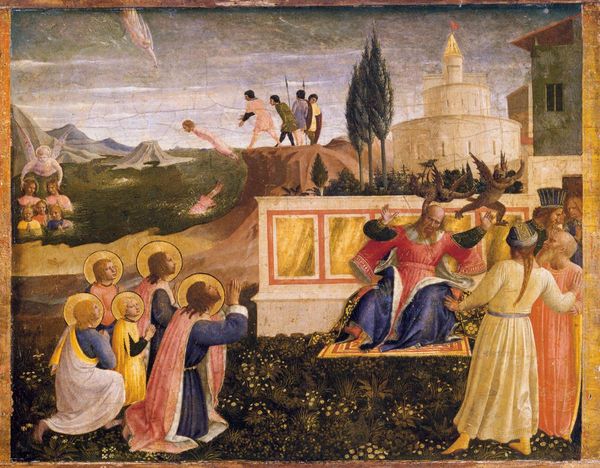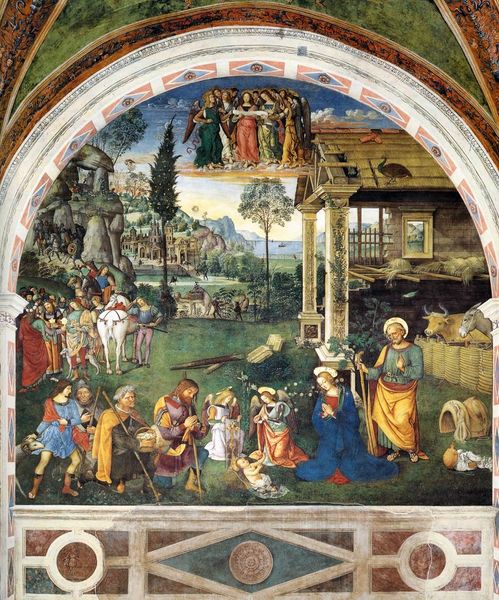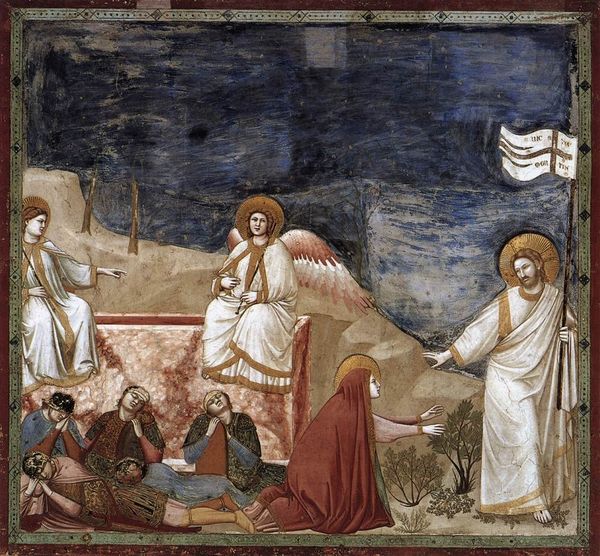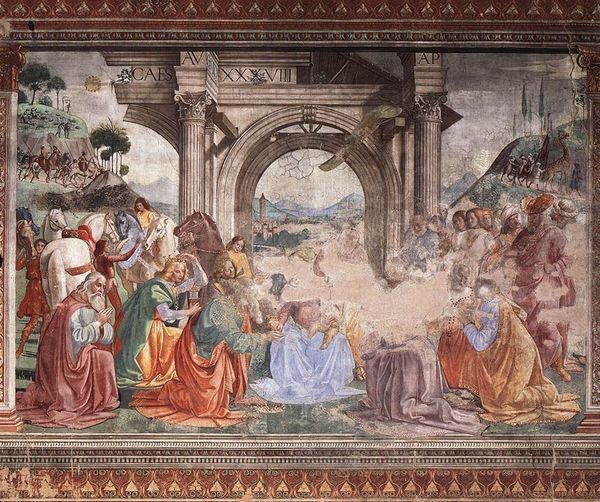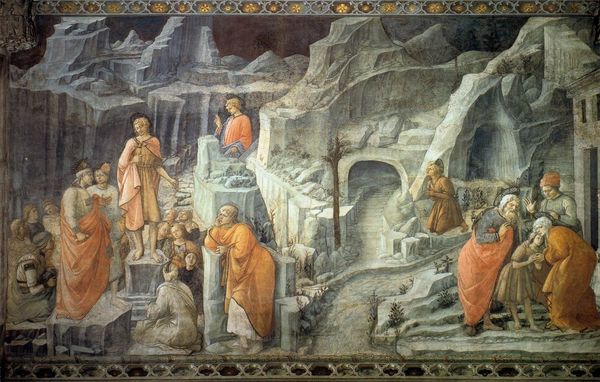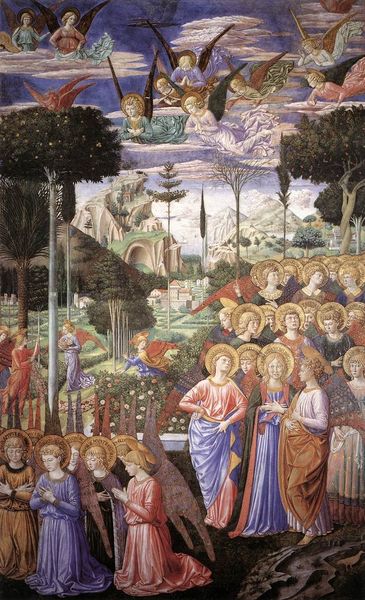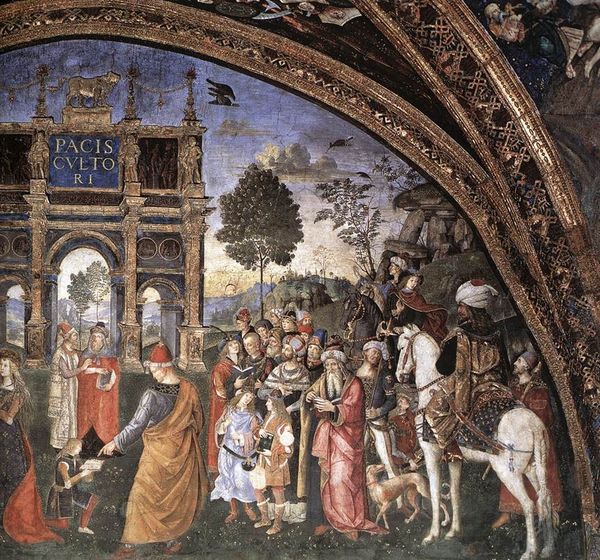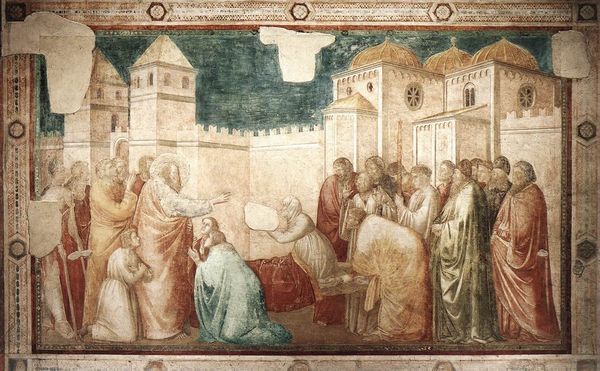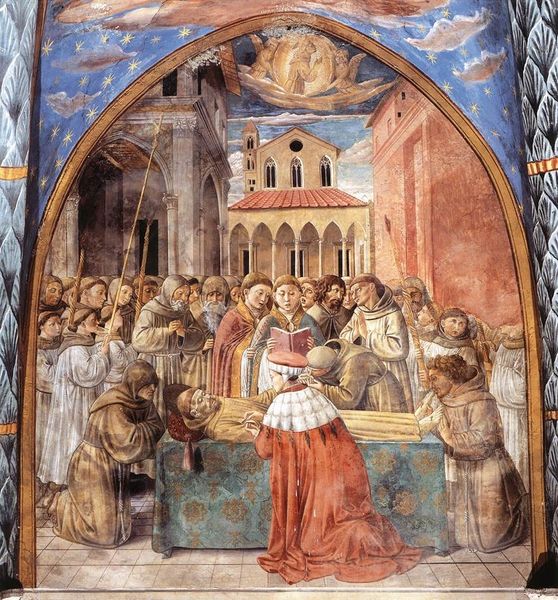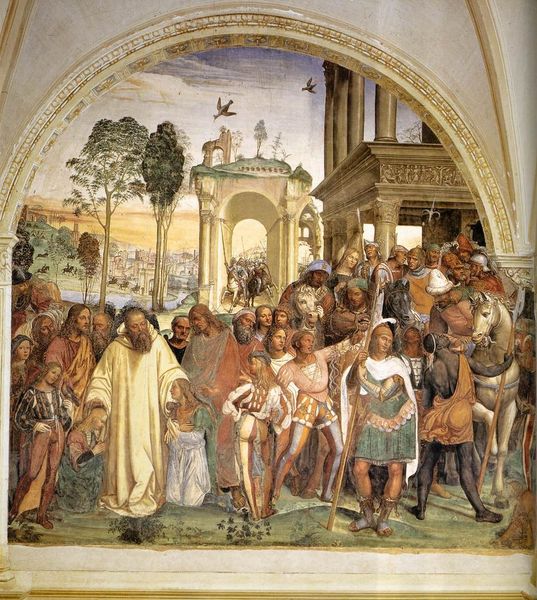
painting, fresco
#
portrait
#
narrative-art
#
painting
#
landscape
#
figuration
#
fresco
#
oil painting
#
christianity
#
history-painting
#
italian-renaissance
#
early-renaissance
#
virgin-mary
#
angel
#
christ
Copyright: Public domain
Editor: This is Filippo Lippi’s “Death of the Virgin,” a fresco from 1469. I’m struck by how the figures, gathered around the Virgin, are placed against what feels like a very active landscape. What can you tell me about the symbolism within this piece? Curator: Well, consider the cultural memory embedded within this image. Lippi uses well-understood symbols to tell a complex story about grief, faith, and the transition from earthly life. The Virgin's death isn't just a depiction of loss; it’s a representation of passage. Look at how he has incorporated that architectural setting - does it recall any other famous paintings you know? Editor: You're right! The composition is similar to other depictions of the Last Supper; a long table replaced with a deathbed. It is fascinating how such visual language reinforces the religious themes! And what about the positioning of the figures around her? Curator: Precisely! And consider each figure’s gestures. The arrangement is not random. Those in attendance are witnesses, and through their postures – grief, prayer, and contemplation - they convey various facets of acceptance. Even the landscape itself echoes the emotionality of the scene: craggy rocks juxtaposed with fertile valleys could be interpreted as reminders of both death and resurrection. Editor: It's amazing how Lippi used those details to add emotional weight to a well-known event, all those layers of historical meaning are so subtle and thought-provoking. Curator: Absolutely, and that's where the fresco's power resides: It transforms a familiar narrative into a powerful statement about cultural values. Thinking about this particular historical period adds depth. Editor: This makes the "Death of the Virgin" much more than just an historical image, now I see Lippi used an ancient scene to provide insight on 15th-century understandings of the world. Curator: And hopefully offers us further avenues to discuss cultural significance over time!
Comments
No comments
Be the first to comment and join the conversation on the ultimate creative platform.
